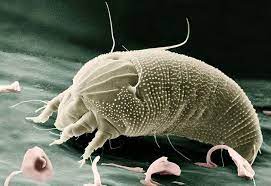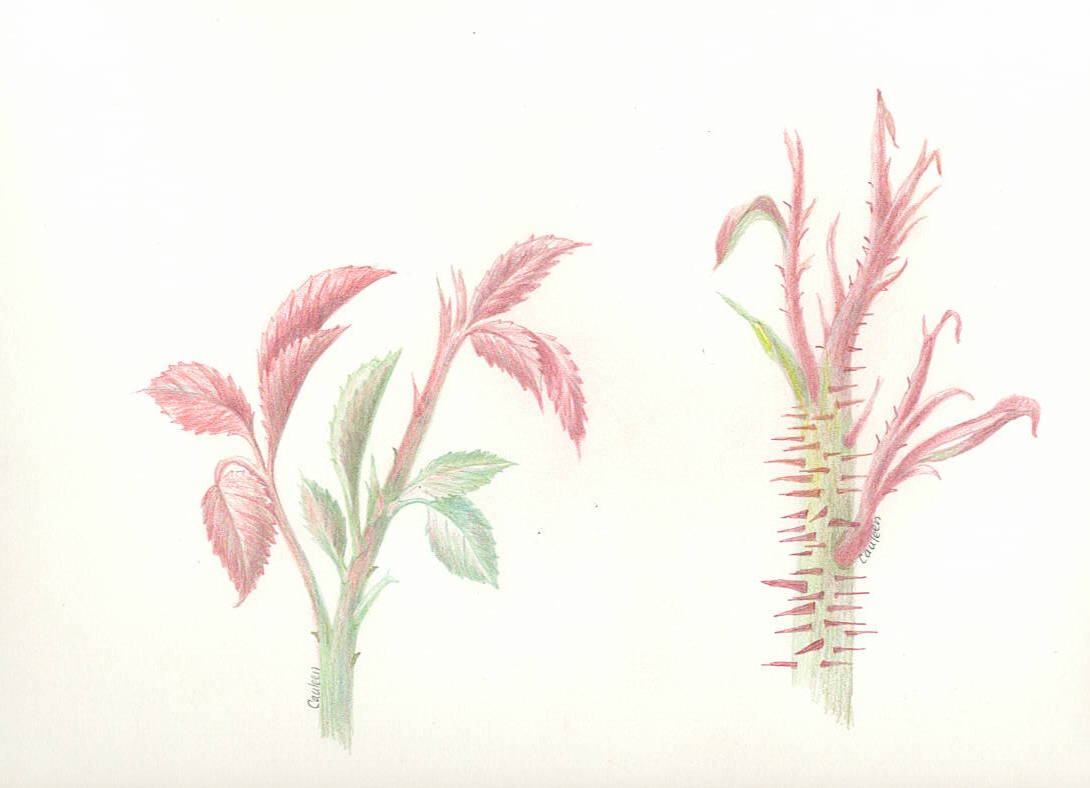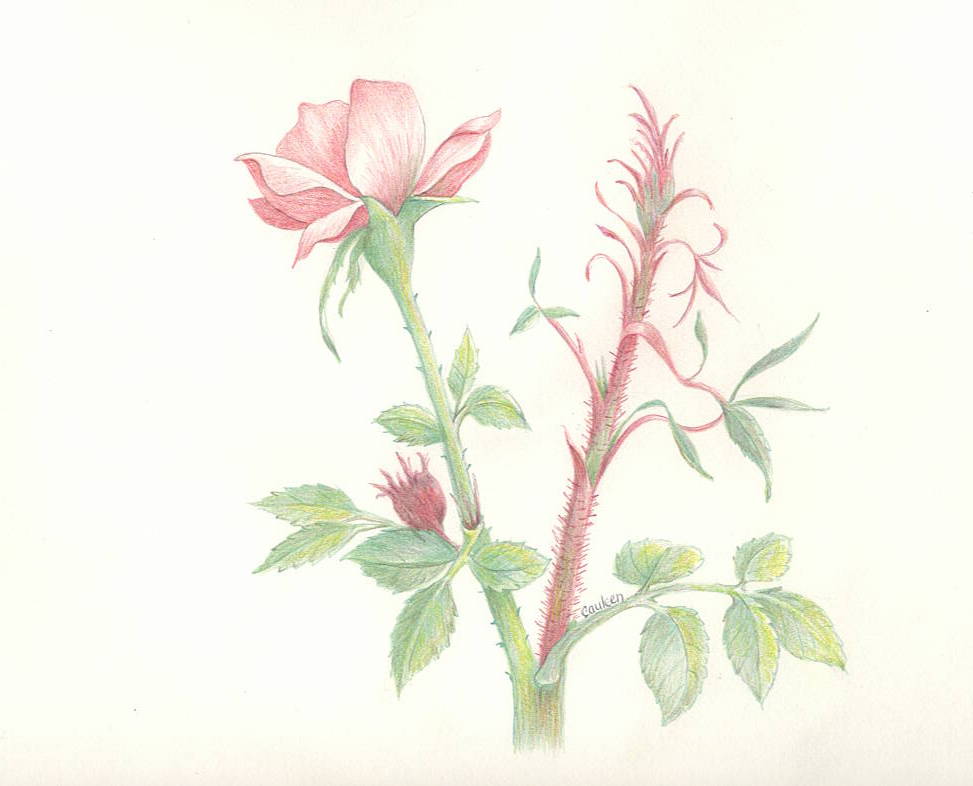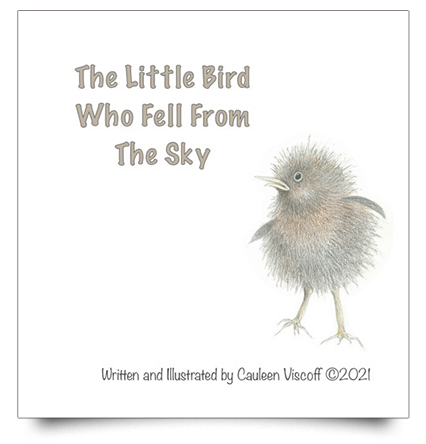I’d love to connect with you! Sign up for my monthly newsletter, "Garden Bliss & Blunder”
ROSE ROSETTE DISEASE
A BIT OF HISTORY:
One of the first documented sitings was in Manitoba, Canada in the 1940’s; but it was thought to be a possible virus that caused a “witches broom” (a mass of tangled growth at the top of a plant or tree)
Sometime in the 1950’s some of the wild roses in Northern California and Wyoming showed similar symptoms.
Then, nothing more till the 1970’s.
Now there are more sitings. Perhaps because we can see and send information (and roses) all over the world that there is more concern and incidents of Rose Rosette Disease or RRD.
The highest incidence currently is in the upper South and the Mid-Atlantic of the US, but it appears in the Midwest and Northeast too - but no area or country is exempt.
WHAT IS ROSE ROSETTE DISEASE?
It’s that dreaded disease, specific only to roses, that makes rose lovers and growers pretty much terrified.
A serious virus of the genus EMARAVIRUS, it is spread from one rose to another by a microscopic mite called Eriophyid - as tiny as a dust particle.

Microscopic ERIOPHYID MITE
USU Extension : Utah State University -
Unable to move on its own, it travels on prevailing winds, snowflakes or clothing - from one rose to another and makes its way into the rose’s vascular system - through the phloem (the cells that transport nutrients from the leaves to the roots).
It can also move from one rose to another when we introduce plants from one garden, nursery or plant sale to another.
It is not transmitted by sap or soil…. and... it can live over the winter in leaf litter.
In 2011 it was given a sort of designation:
a "complex, negative-strand virus…."
All the fuss is about a mite
which has been found on a snowflake
but doesn’t like water….
and is airborne, but cannot fly.
WHAT DOES RRD LOOK LIKE?

- New bright red, stunted, narrow
or contorted leaves
- Prolific leaf growth;
- Deformed or distorted flower buds
-A lot of tiny flower buds in a tight cluster
- Thicker stems with excessive number of thorns
- A ‘witches-broom’ top growth
It may look similar to the damage done by Herbicides: (Glyphosate in RoundUp)
- Small leaves; a bit deformed
- Leaves are yellowish: not red,
- Not the extra growth as with RRD
- No excessive thorns.

Healthy new growth - left and RRD new growth on right
RRD SHOULD NOT TO BE CONFUSED :
with NEW GROWTH,
BASAL BREAKS or BLIND CANES
HEALTHY GROWTH
New growth on roses is often seen in red canes when they first emerge
The leaves are well formed - not distorted
Stems have a normal number of thorns
And these canes will turn green when full grown
RRD canes do not develop into normal canes.

Healthy Basal Breaks - above

Dark red, deformed bud on lower left:
large healthy bloom above
and RRD new growth on right side of sketch
WHAT SHOULD YOU DO?
First, be sure it is RRD and not just new growth or herbicide damage
LOOK: roserosette.org
The rose should show multiple symptoms before you dig it up or remove it.
When buying a rose with what appears to be odd growth and you're not sure, don’t bring it home
If you have one in a pot, quarantine it if you are not sure and keep it away from other roses for at least a year
Look at your roses all the time… catch RRD early - vigilance is key.
and... if you do have it, please send a photo and your location
Remove the whole rose
or it will spread to the others.
Do not take a cutting of a “healthy cane” from a rose with RRD… it is not healthy and you cannot save the rose.
Check the rest of your roses for early signs… but be vigilant; it may not show up for a few months.
if you see signs on one cane but not on the rest of the rose, be careful…. it will most likely be in the whole plant - the virus will still be in the rose. It can take 4 to 6 months for the virus to show.
(If time is an issue and you cannot remove the whole rose when you first see it, cut off the affected canes and put them in dark plastic to keep those tiny mites from dropping off the canes as you remove them....then dig up the rest as soon as you can.
Bag it - do not burn it or add to compost…. heat will spread the mites
Check your area… Province, State, Country for sightings
IS THERE A CURE FOR RRD?
Essentially, no.
There is currently on-going research using miticides but they are more for commercial growing situations and not yet suitable or available to home gardeners.
Scientists are working on resistant roses and early detection (because the actual symptoms are not obvious until the disease presents the evident growth)
HOW CAN I PREVENT RRD?
There are definitely things you can do
and some things you shouldn't do.
Don’t use leaf blowers near roses - tiny mites are airborne and easily blown through the garden.
Plant barriers can protect from prevailing winds where possible… a hedge or tall nearby plants like grasses
Leave walking space between your roses. (Mites cannot walk or fly)
Be vigilant and check your roses often.
Remove the rose immediately if it fits the list of symptoms above.
Here is the link to an excellent YouTube video created by Paul Zimmerman who collaborated with scientists about RRD
The Everyday Rose Show:
A Discussion About Rose Rosette Disease


